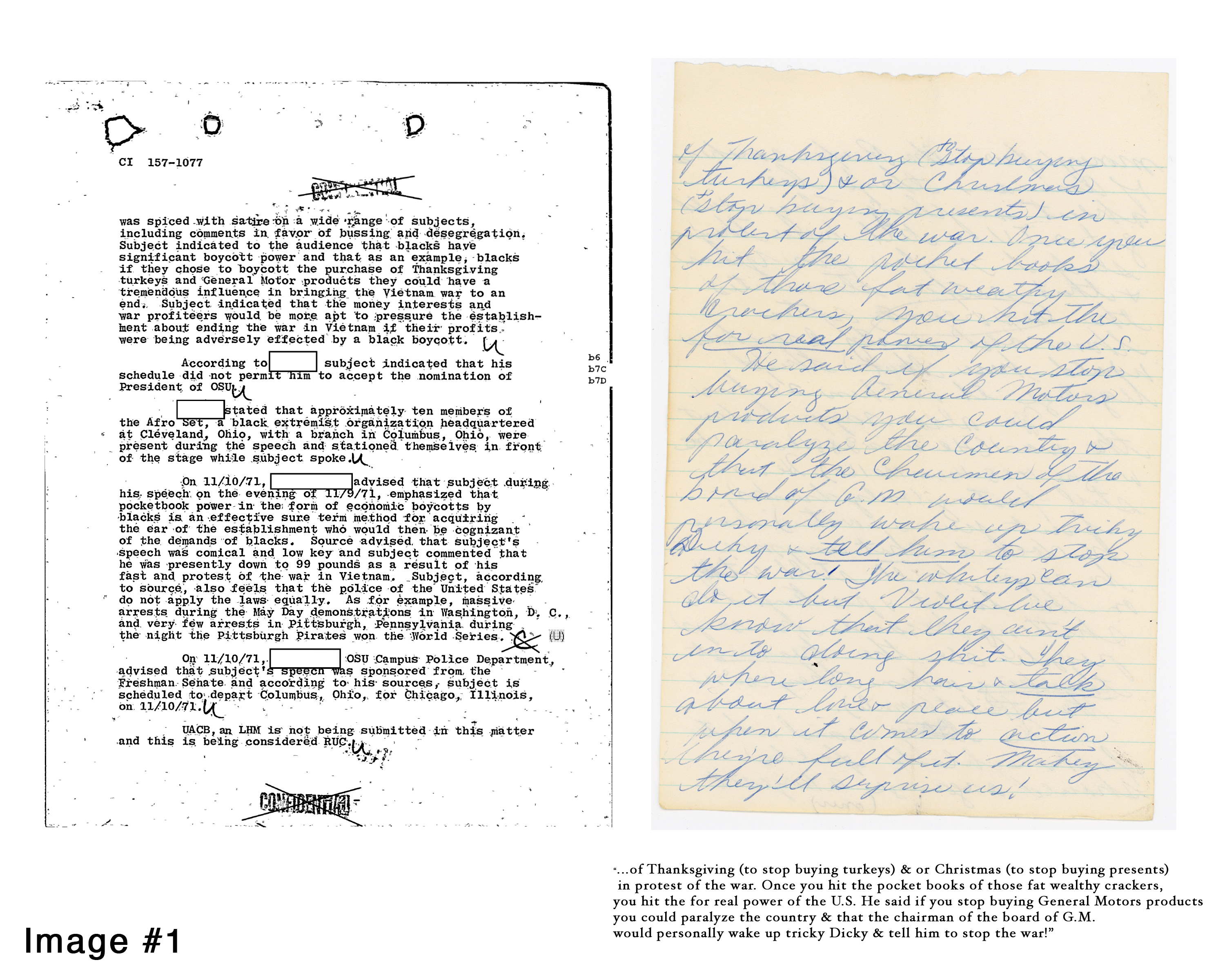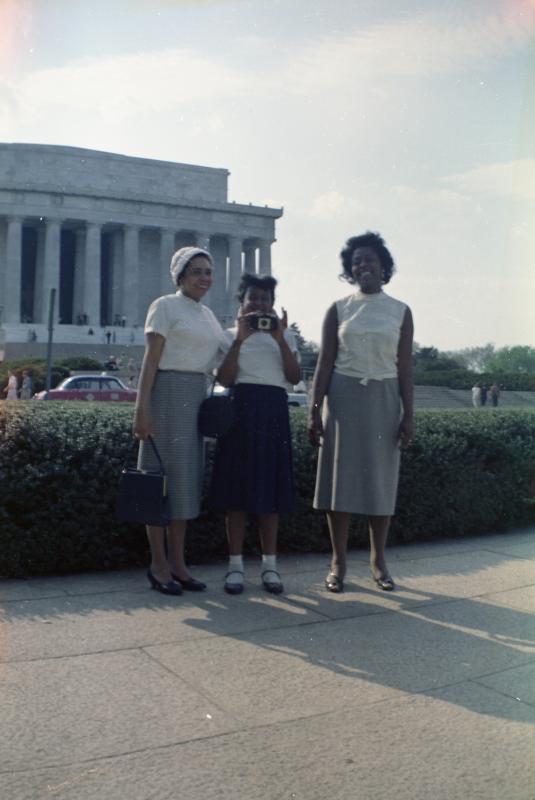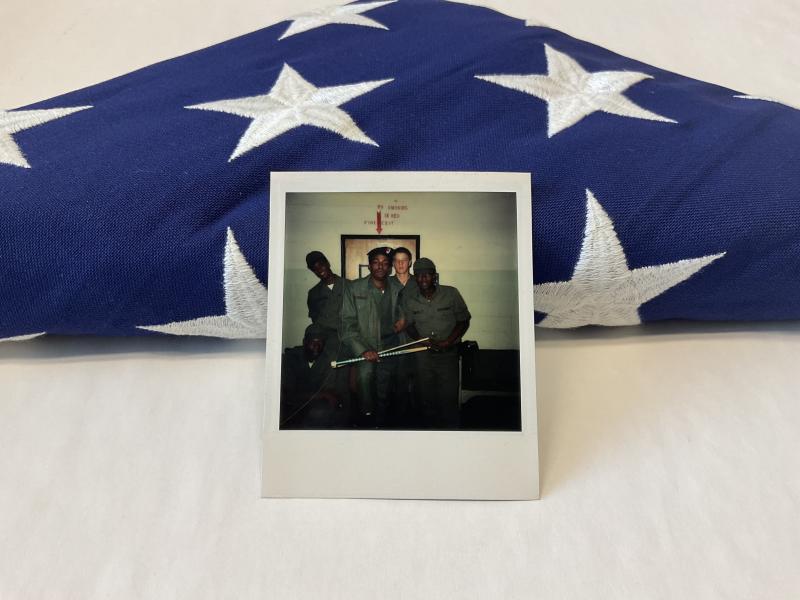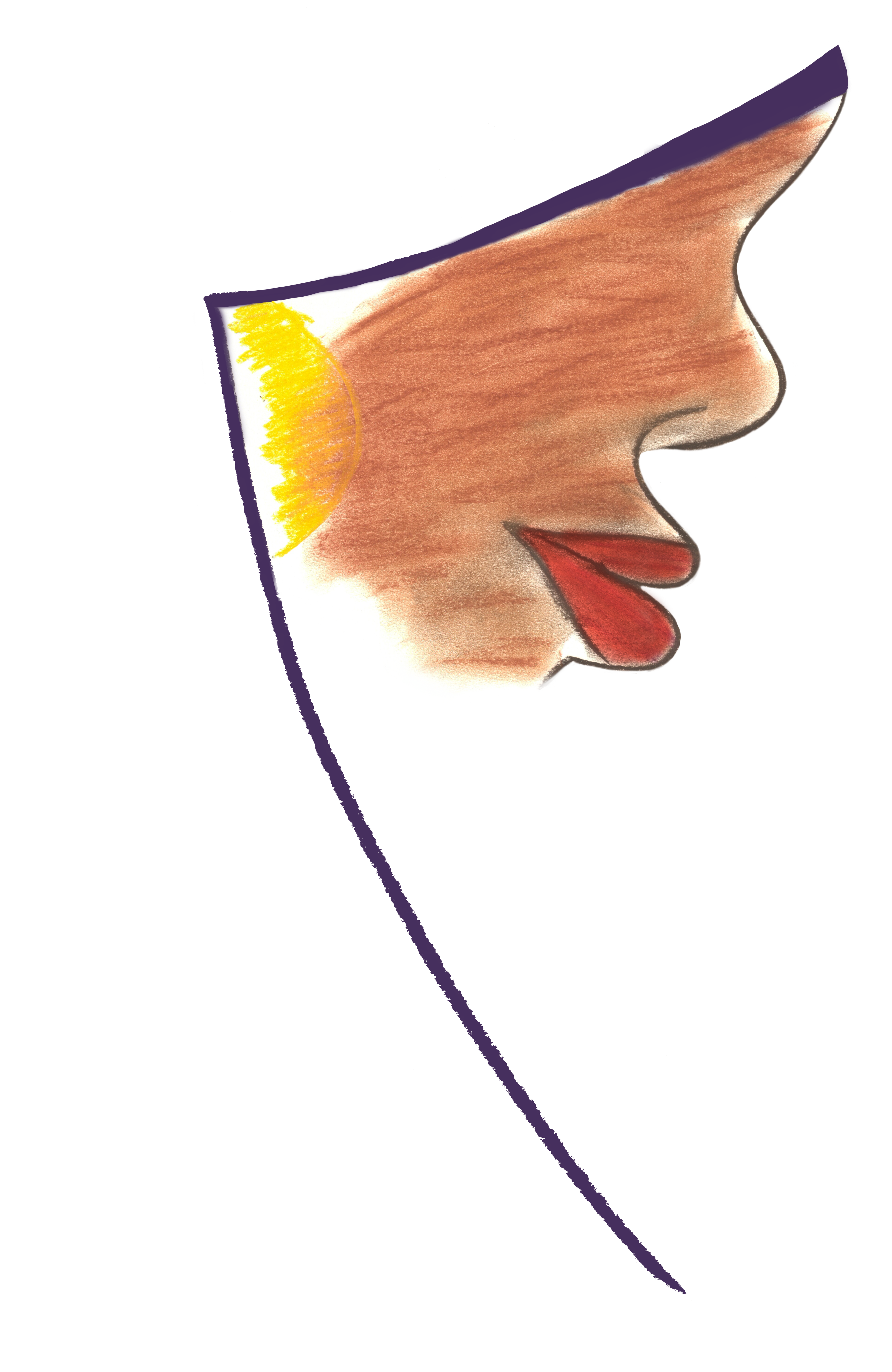Why Umi's Archive?
Curator's Notes:
The collections presented in this first exhibition Why Umi’s Archive? invite you to think about power in archives and in our stories: Whose account of the past counts? Whose lives should be remembered? These questions are inspired by anthropologist Christen Smith's call to "Cite Black Women." These questions come up in the juxtaposition of Umi's college letter to the FBI documents in "Dick Gregory." These questions likewise appear in the other collections, such as Photography and Self-Determination, Servicemen, and Channel Surfing Vol. 1, through photos and video that both document everyday Black life and reimagine the archive in creative and speculative ways – riffing off scholars like Saidiya Hartman. In doing so, these collections speak against the dominant narrative that Black people are a people without a history whose presence in the Archive (with a capital "A") is necessarily scant, if we are there at all. These collections, like Umi's Archive as a whole, disrupt this form of white supremacy’s power by taking seriously marginalized memories to rectify the Archive, i.e. what the public knows.

- Dick Gregory
- 1971

- Photography and Self-Determination
- 1930s - 1960s

- Servicemen
- 1942 - 2021
- Channel Surfing with Umi Vol. 1 (1998-2008)
- 1998 - 2008
- Livestream
- The 1st exhibition launched with a livestream conversation between curator Su'ad Abdul Khabeer and Leslie Hewitt, artist and associate professor at Cooper Union.
- Performance
- 2021


